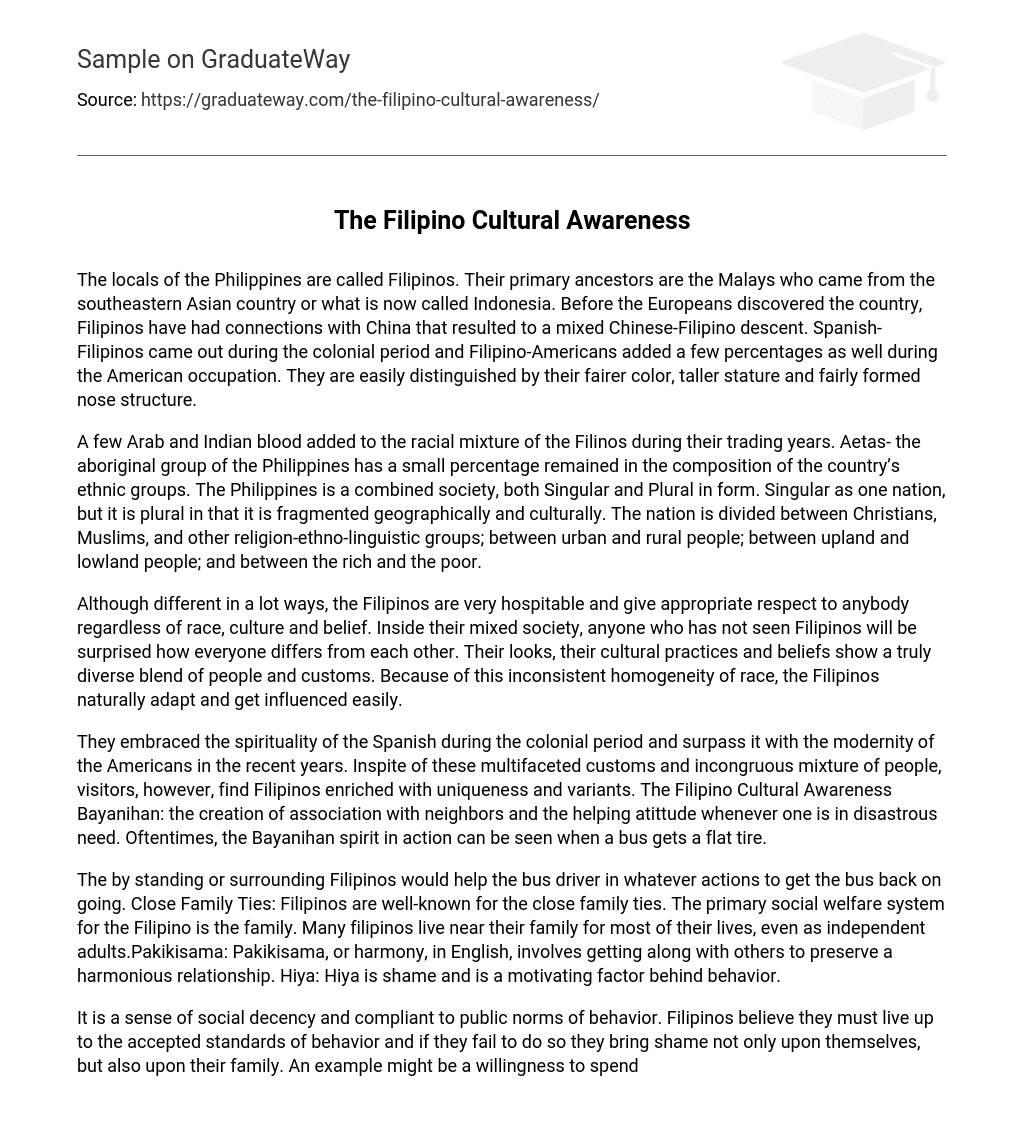The Philippines’ locals, called Filipinos, trace their primary ancestry back to Malays who migrated from present-day Indonesia in Southeast Asia. Prior to European arrival, Filipinos had established connections with China, leading to a blended Chinese-Filipino heritage. The colonial era introduced Spanish-Filipinos, while Filipino-Americans contributed to the population during American occupation. These groups can be recognized by their fairer skin tone, taller stature, and well-defined noses.
The racial diversity of Filipinos was influenced by Arab and Indian individuals during the trading years, resulting in a diverse population. The Aetas, who are the indigenous people of the Philippines, represent a minority among the various ethnic groups in the country. The Philippines is known for having two identities – one as a unified nation and another as a blend of different cultures and geographies. It is also divided based on religion, with Christians, Muslims, and other religious and ethnic linguistic groups coexisting. Additionally, divisions exist between urban and rural populations, upland and lowland communities, as well as between those who are affluent and those living in poverty.
Despite their differences, Filipinos are recognized for their inclusive and respectful attitude towards individuals of various races, cultures, and beliefs. Their diverse society exhibits a remarkable range of variations in appearance, cultural practices, and beliefs. This highlights the distinct combination of people and traditions found in the country. Because of the heterogeneous nature of their population, Filipinos readily adjust and are easily influenced.
During the colonial period, Filipinos embraced the spirituality of the Spanish. In recent years, they have surpassed it with the modernity of the Americans. Despite the multifaceted customs and incongruous mixture of people, visitors find Filipinos enriched with uniqueness and variants. The Filipino Cultural Awareness is exemplified through Bayanihan, the creation of associations with neighbors and a helping attitude in times of disastrous need. The Bayanihan spirit is often seen in action when a bus gets a flat tire.
The by standing or surrounding Filipinos would assist the bus driver in any way possible to resume the bus journey. Close Family Ties: Filipinos are renowned for their strong family connections. The family serves as the main social support system for Filipinos. Many Filipinos live in close proximity to their family members for the majority of their lives, even when they are independent adults. Pakikisama: Pakikisama, or harmony, in English, entails fostering good relationships with others to maintain a harmonious bond. Hiya: Hiya refers to the feeling of shame and acts as a motivating factor for one’s actions.
The passage explores the notion of social decency and adherence to public norms within the Filipino culture. It is believed that Filipinos should conform to accepted behavioral standards in order to avoid bringing shame upon themselves and their families. For instance, some individuals may go overboard with party expenses, even beyond their means, just to prevent embarrassment stemming from their economic situation. Experiencing public humiliation, criticism, or falling short of expectations can result in feelings of shame and diminished self-esteem. Additionally, the concept of Utang na Loob emphasizes expressing gratitude towards those who have provided assistance during challenging times. The saying “Ang hindi lumingon sa pinanggalingan ay hindi makararating sa paroroonan” underscores the significance of acknowledging one’s origins. Traits such as Amor Propio, Delicadeza, and Palabra de Honor contribute to an individual’s self-perception and honor. However, it is vital to recognize that these practices can also be exploited in certain circumstances.
Expressing gratitude can be demonstrated through granting specific privileges without taking into account the ethical consequences. Additionally, familial bonds may lead to partial treatment. Prior to the arrival of the Spanish and their introduction of Roman Catholicism, the native inhabitants followed animism as a religious practice that entailed venerating nature. Their customary beliefs encompassed a hierarchical system of deities and spirits, mirroring the organization within Roman Catholicism, thus facilitating their assimilation of this faith.
Bathala, the supreme God of the Tagalogs, is symbolized by the araw, or sun, while Gugurang is the supreme God of the Bikolanos. Other Gods and Goddesses worshipped by the Tagalogs include the buwan (moon), tala (stars), and even natural objects like trees, shrubs, mountains, and rocks. The spiritual beings include aswang (ghoul), tikbalang (horse-headed man), kapre (giant who smokes tobacco), tiyanak (vampire that feeds on children’s blood), santelmo (fireball), dwende (dwarves and elves), ik-ik (witches). Additionally, there are many engkanto (minor spirits) and diwata (fairies/nymphs).
Other than that, the pre-colonial inhabitants were engaged in voodoo practices, such as pangkukulam, or witchcraft. Beliefs like usog (a child greeted by a stranger will fall ill) and lihi (unusual craving for something during pregnancy) also exist. These beliefs have been passed down to the present generation of Filipinos, leading some foreign authors to refer to them as ‘Pagan-Christians’.





